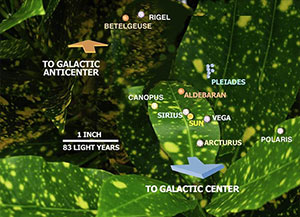Artist Jon Lomberg enjoyed a 25-year collaboration with the late Carl Sagan, illustrating The Cosmic Connection (1973) and providing work for Cosmos, Broca’s Brain (1979), and the cover for Sagan’s novel, Contact (1985). And Lomberg’s Cosmos Archive will go under the hammer at Heritage Auction’s Rare Books Signature Auction on April 8-9 in New York.
A long descriptive article about the art can be read at the link.
This incredible archive includes sixty-two original signed paintings, drawings, and sketches; forty-seven signed one-of-a-kind prints of special effect paintings used in the series, four signed retouched photos from the series, thirteen sheets of signed storyboards (including dozens of drawings), approximately twenty documents and notes related to the series, production photos, and one stereoscopic viewer with slides testing dimensionality of the “Milky Way Approach” sequence from the series.
On the other hand, some of Lomberg’s best-known work can never go to auction because it’s already left the solar system.
His work also includes designing artwork and material for various NASA interstellar exploratory missions, including artwork for the famous “Voyager Golden Records,” the gold-plated copper record albums that were mounted in both Voyager spacecraft, each launched by NASA in 1977. It is just possible (though, admittedly, not very likely) that the first images of Earth and Mankind seen by an extraterrestrial civilization will be those done by Lomberg.
Fortunately, his incredible Galaxy Garden is no farther away than Hawaii. It models the Milky Way to scale with a garden of living things:
A fountain in the middle of the garden marks the “gravity well” with a bimodal jet so water is going both directions. Out on the galactic arm corresponding to the position of our solar system, the place where the Sun would be is marked by a tiny jewel on a leaf. Driving home the scale involved, Lomberg says all the stars we can see with the naked eye are either on that same leaf or an adjoining leaf!




